Native Organizers Blaze a Blue Trail
Activists among Navajo and Hopi plan to elect Biden -- again
Rosie Parrish, Navajo Nation, is a Family Votes Matriarch. After voting Democrat for years, she now helps her family and friends vote. “We have to vote,” Parrish said. “It’s the way we beat back these extremists. The only way is to fight for our rights and help one another.”
Parrish and thousands of other Northeast Arizona Native-Americans are voting in greater numbers than ever, thanks to the remarkable efforts of several activist groups. Among the most prominent is NEAZND — Northeast Arizona Native Democrats.
“A Humane Campaign”
Like many groups, NEAZND sends post cards and makes calls but their commitment does not stop at the post office or the phone.
“We love to call ourselves a humane campaign,” said Jennifer Stokely Eis, NEAZND out-of-state director. “We don't just show up three months before a campaign and start asking people for votes. We nurture the voter.”
Arizona was one of the last states to give Native Americans the vote — in 1948. Until the 1970s, an English literacy requirement kept most Native Americans from voting. And native voter suppression remains rampant (see below). But politics is not the only obstacle.
Low-income communities, lack of infrastructure and residential addresses, constantly shifting voting rules, and discrimination pose barriers no voter should have to endure. Kaibab Paiute voters often travel five to seven hours to reach early voting sites. Some Navajo must travel 95 miles to reach their closest early voting location.
Volunteers — Beyond Postcards
But through personal contact, NEAZND and some 100 other organizations are energizing Native voters.
“NEAZND volunteers include incredible people like Lorraine Coin,” Eis said. “Lorraine has been organizing on Hopi land now for a decade and has made a personal impact on Hopi voter turnout.” Coin and other NEAZND volunteers work year-round with their communities.
“Only last week she found somebody who needed some firewood,” Eis said. “She went out and found folks that were selling firewood and connected the two.”
Nurturing the voter as much as the vote makes a difference. In 2020, tribal lands helped President Biden win Arizona. Biden won the state by just over 10,000 votes, the first Democrat to claim Arizona in two decades. Much of the margin came from Hopi and Navajo voters who cast nearly 60,000 ballots, up 50 percent from 2016. Biden’s support among Navajo and Hopi voters ranged from 60 to 90 percent.
“It truly takes a village,” Clara Pratte, a political operative and Navajo woman, told the Associated Press. “Could it have been done without a tribal vote? No.”
The Northeast Arizona Native Democrats is a five-year old program of the Navajo County Democrats, in cooperation with the Apache County Democrats and the Coconino County Democrats, and therefore works with all three tribes. Arizona Native Vote also works across county lines and tribal communities, building political power in the Navajo Nation, White Mountain Apache Tribe, San Carlos Apache Tribe, and Hopi Tribe.
In each native nation, community organizers, called Firekeepers, register voters, assist with voter identification, and educate residents. This year, ANV plans to contact 50,000 potential voters, advocating for early voting, and increasing native registration and turnout by at least 2 percent.
Unleashing the Power of Matriarchs
In matriarchal societies like the Hopi and Navajo, women are critical conduits for news of important issues. That’s why NEAZND recruits, trains, and supports Family Votes Matriarchs like Rosie Parrish, helping them help their families and communities register to vote. In 2022, more than 130 volunteer matriarchs helped Democrats win key races in Arizona. Last year, NEAZND recruited another 300 Family Votes Matriarchs and plans to mobilize another 150 this election year.
Last July, NEAZND cosponsored the Indigenous Rural Action Summit in Kayenta, a small township in red rock Navajo country. Volunteers called 200 people to gather support. Turnout in the remote rural town was slight, but the response went far beyond showing up.
Of the 200 called, only ten expressed no interest. “That means 190 people out of 200 were happy to hear from Northeast Arizona Native Democrats,” said NEAZND volunteer Elizabeth Reingold. “That didn't mean they could make it, it didn't mean they were available, but they were all happy to hear from people. How many phone banks have you been on where the very large majority of the people that you connected with were happy to hear from you?”
NEAZND volunteers seem no less content. NEAZND lives its values when working with outside volunteers as well. They treat volunteers who write postcards with care and respect. For example, they make sure the volunteers know that their postcards are making a difference by sharing stories and photos of their impact. This approach to working with volunteers has made NEAZND’s postcard campaign tremendously popular in the postcard writing community.
Voter Suppression
In late February, a federal judge struck down provisions of two new Arizona laws that restricted voting access. However, the decision left in place other provisions such as a proof-of-citizenship requirement. Organizations such as the Native American Rights Fund and the Arizona Native Vote Election Protect Project (part of the Sandra Day O'Connor College of Law at Arizona State University) continue to battle each challenge that comes their way.
A humane campaign. For NEAZND and others working on tribal lands in Arizona, Jennifer Stokely Eis says that comes down to: “Commitment to voters, a commitment to values, and a sensitivity that helps an outside community work with the community they are trying to support.”
The Grassroots Connector covers activism from all angles. READ MORE



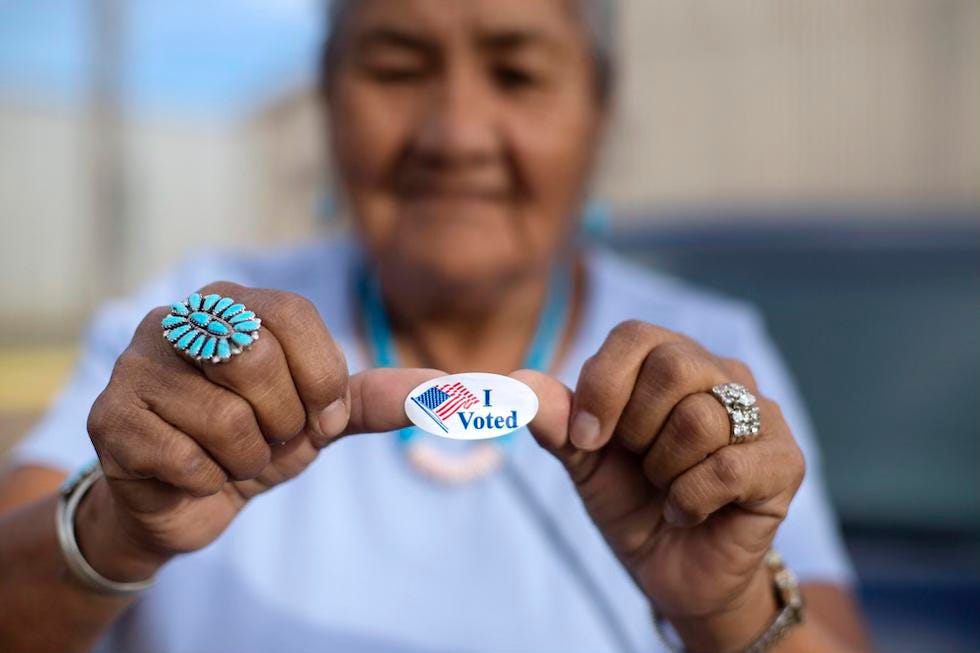
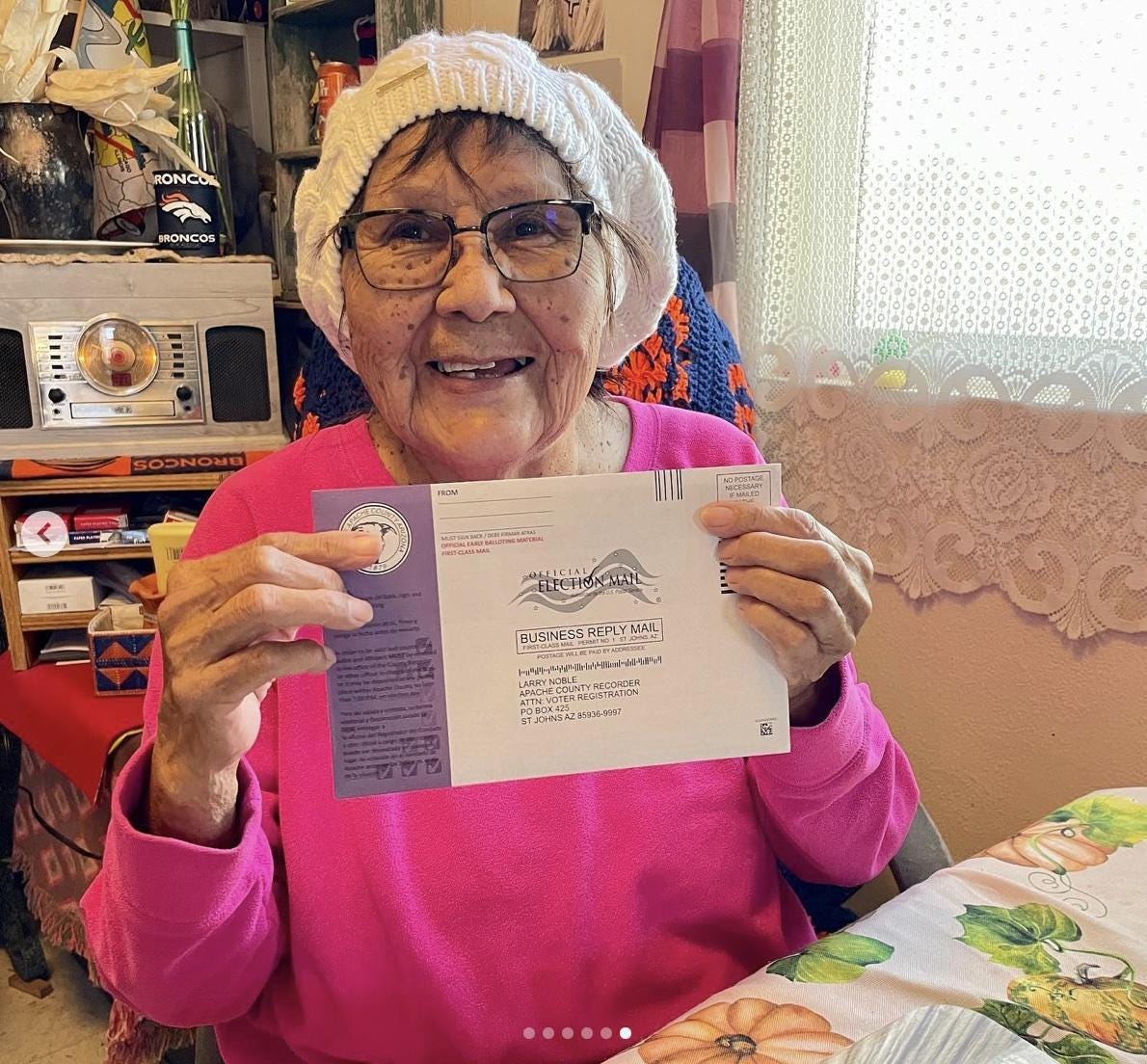
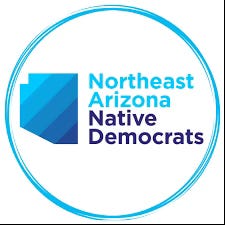
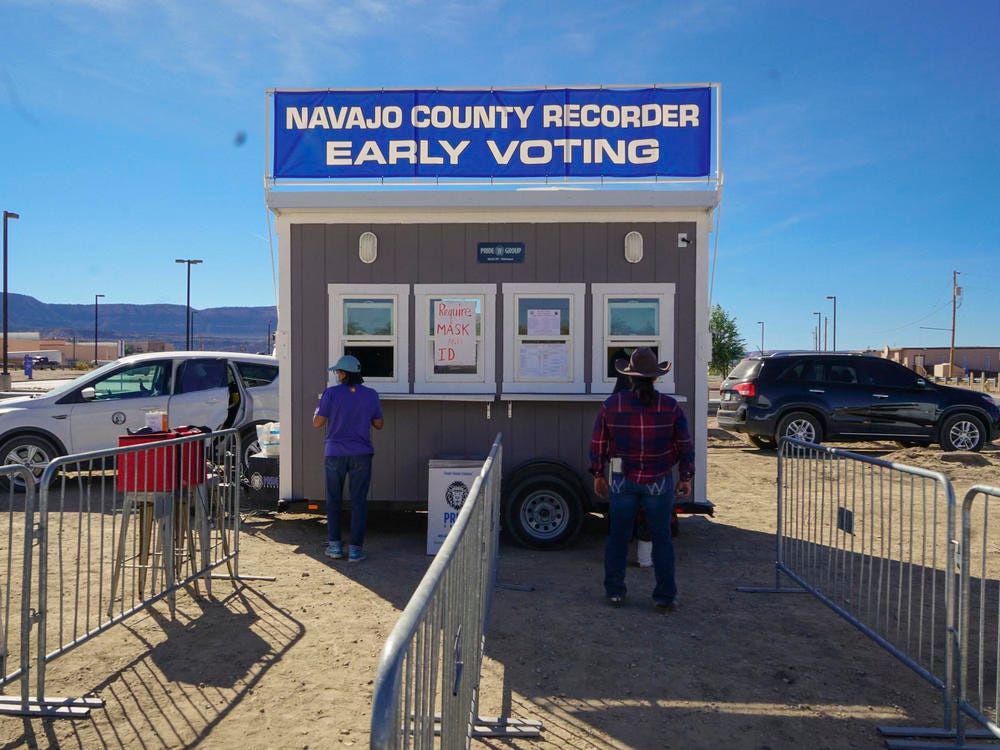
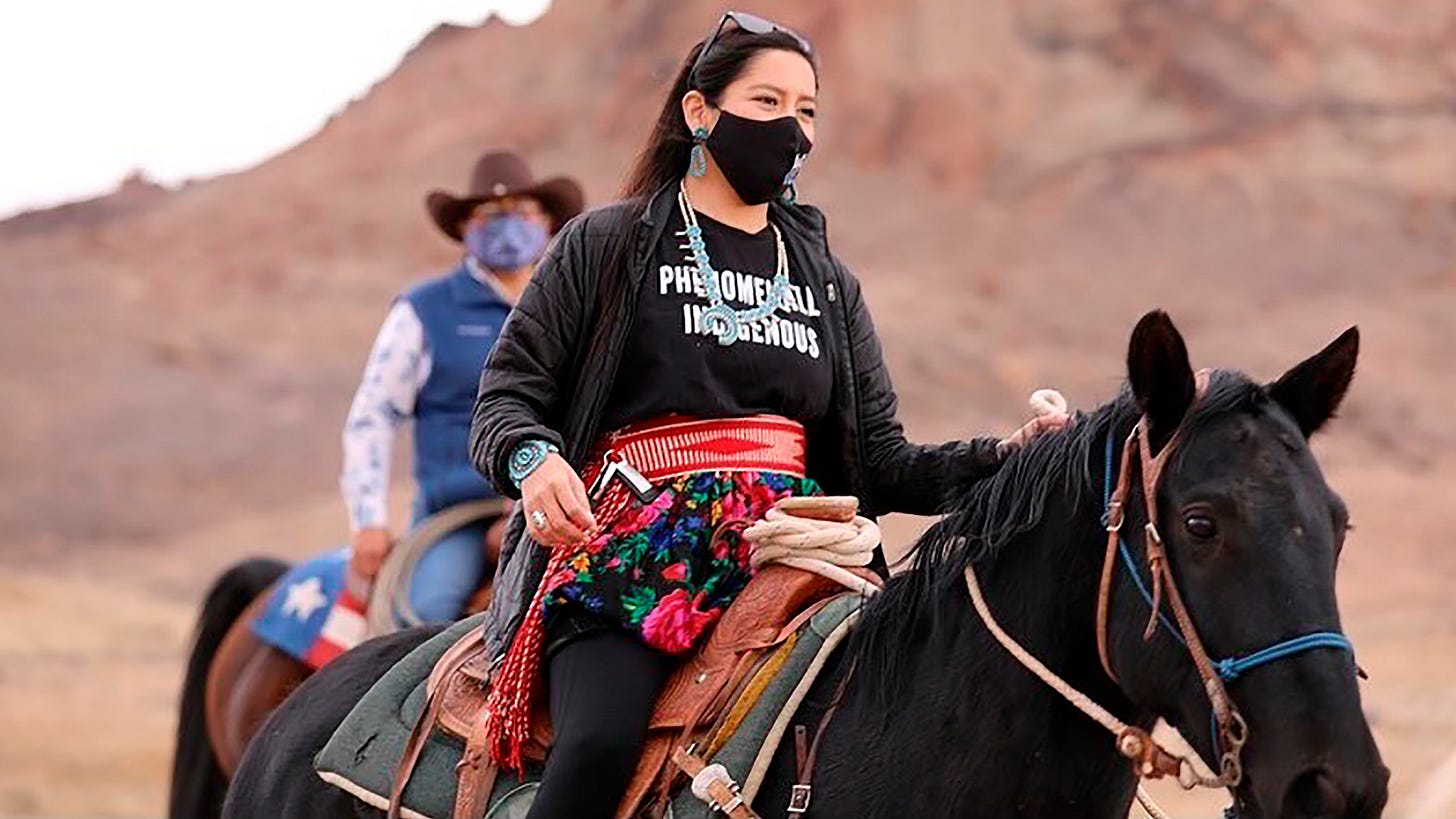

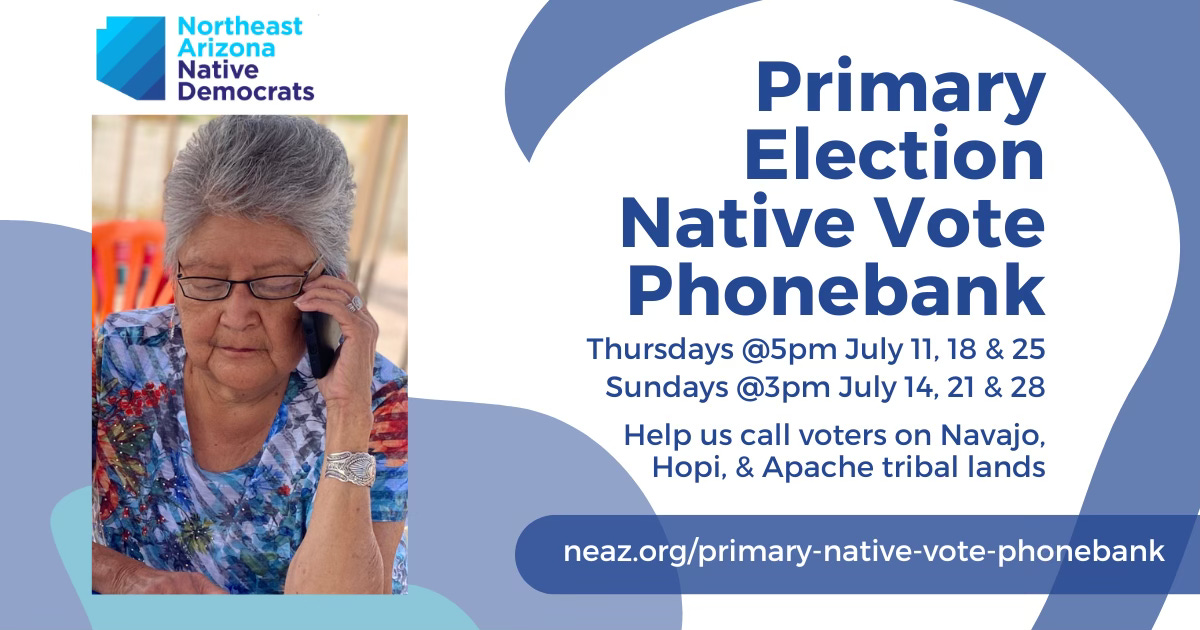

I am a postcard writer who volunteers with NEAZ Native Democrats. It is a great group with which to work and I truly feel like I am making a difference! (I am also a donor).
I am frequently frustrated by my mostly white, fairly affluent suburban neighbors who can't be bothered to vote even in a presidential election - I'm in NC where we have no-excuse absentee ballots and 18 days of early voting in addition to election day itself. In 2020 because of Covid, they almost doubled the number of early voting sites -IIRC there were 4 sites within 5 miles of my house. Yet we got nowhere near the voter turnout reported in this article!
Also, check out this Twitter post from 2020 comparing the AZ map showing the location of the AZ tribal lands vs. a "heat-map" by precinct showing which areas in AZ voted blue: https://twitter.com/Deb_manuel/status/1325101219472269313?s=20
Thanks for this story. I am also writing postcards for NEAZ Native Democrats. Liked Cheryl's maps as well - blue areas are the tribes and the urban areas.